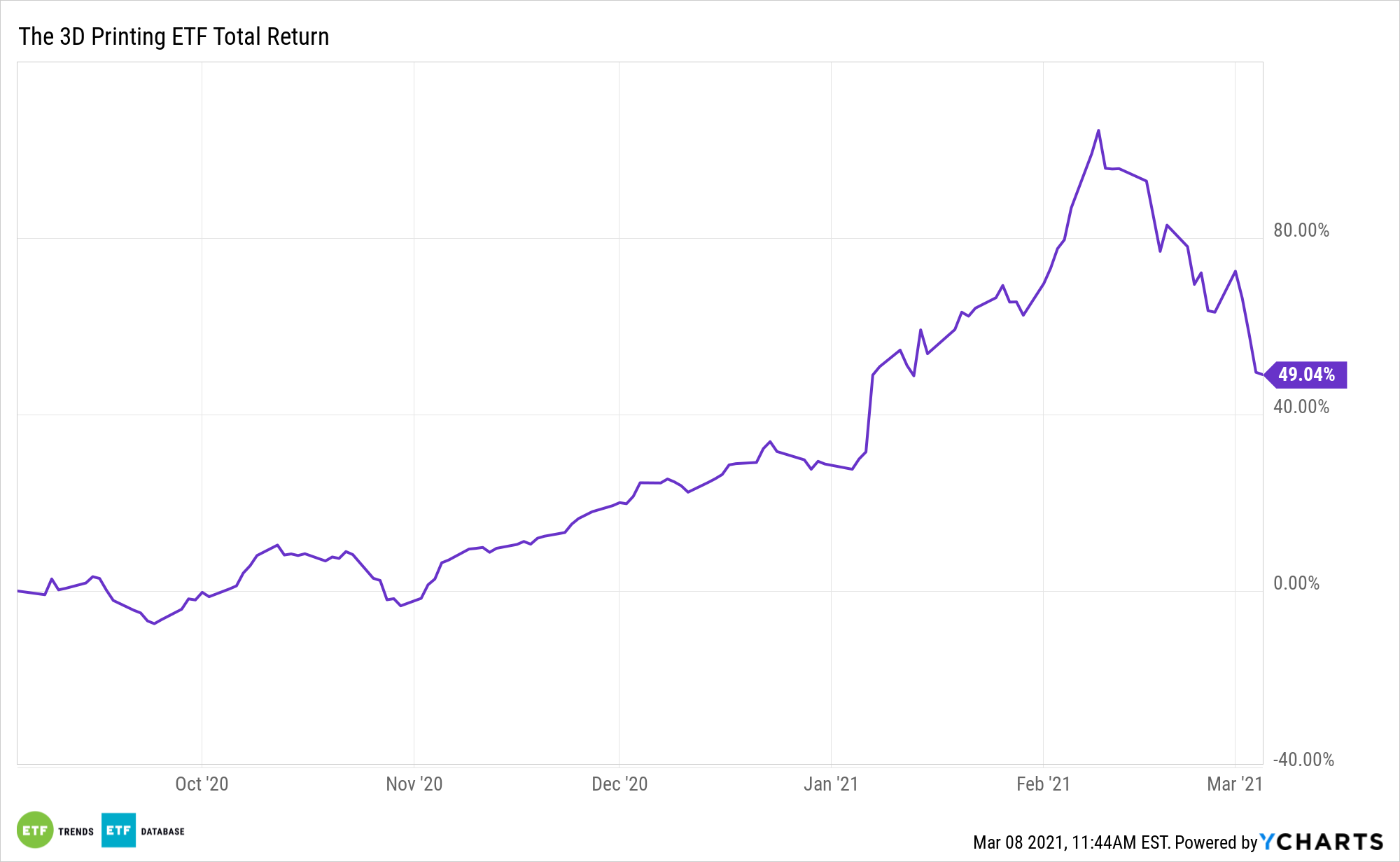The ARK 3D Printing ETF (CBOE: PRNT) is one of the original disruptive technology exchange traded funds and thanks to some unique advances in 3D printing technologies, it remains a staple in the emerging growth lexicon.
PRNT is the first US-listed ETF dedicated to the 3D printing theme. The fund is one of two passively managed products from New York-based Ark Investment Management. ARK believes 3D printing will revolutionize manufacturing by collapsing the time between design and production, reducing costs, and enabling greater design complexity, accuracy, and customization than traditional manufacturing.
Healthcare is one of the most fertile territories for 3D printing. New frontiers are emerging in the arena.
“University at Buffalo engineers (highlight) progress toward 3D-printed human tissue and organs — biotechnology that could eventually save countless lives lost due to the shortage of donor organs,” reports EurekAlert.
PRNT’s Compelling Future
Integral to the PRNT thesis is that 3D printing intersects with other disruptive segments, enhancing revenue streams and diversification among end users. Within healthcare, there are myriad opportunities for 3D printing companies to improve patient outcomes.
PRNT’s underlying index index “is composed of equity securities and depositary receipts of exchange-listed companies from the U.S., non-U.S. developed markets, and Taiwan that are engaged in 3D printing-related businesses within the following business lines: (i) 3D printing hardware, (ii) computer-aided design (‘CAD’) and 3D printing simulation software, (iii) 3D printing centers, (iv) scanning and measurement, and (v) 3D printing materials,” according to Ark.
3D printing has myriad applications for a variety of sectors, including industrials and technology, but healthcare is one of the prime examples of where 3D printing can shine for long-term investors. That’s particularly true if advancements in 3D printing organs and tissue advance beyond the concept to practical application phase.
Recent research on that front “centers on a 3D printing method called stereolithography and jelly-like materials known as hydrogels, which are used to create, among things, diapers, contact lenses and scaffolds in tissue engineering,” according to EurekAlert. “The latter application is particularly useful in 3D printing, and it’s something the research team spent a major part of its effort optimizing to achieve its incredibly fast and accurate 3D printing technique.”

For more on disruptive technologies, visit our Disruptive Technology Channel.
The opinions and forecasts expressed herein are solely those of Tom Lydon, and may not actually come to pass. Information on this site should not be used or construed as an offer to sell, a solicitation of an offer to buy, or a recommendation for any product.

